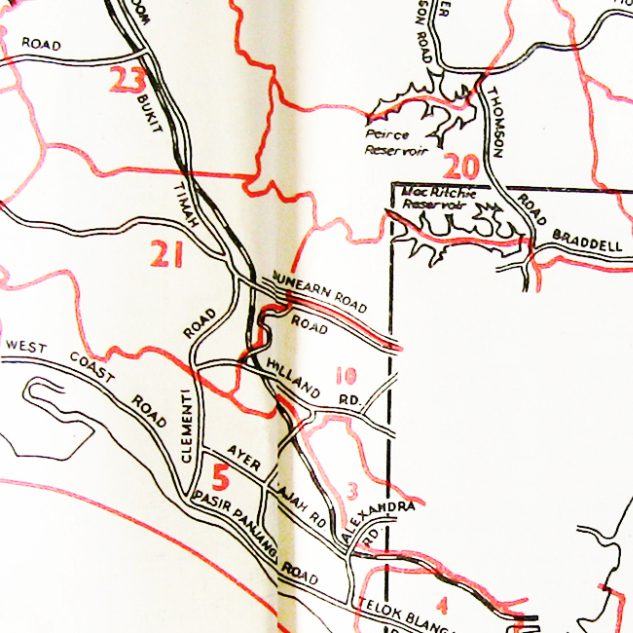
In surveying Paul Sermon’s artwork Telematics Dreaming (1992), we delve into how telematic art has come into being not simply as a result of technological advancements in computer-mediated telecommunications networks but also its value in contesting similar formal concerns of conceptual art formulated under the rhetoric of “dematerialization” of the art object.
As an art form, telematic art (similar to notions of conceptual art) challenged the traditional relationships between the art object and the viewer. No longer is the viewer an observer of passive art objects, telematic art creates interactive, behavioural contexts for an active viewing and at times a more direct experience of an aesthetic encounter. The encounter sets up an unconventional artistic experience, where the artistic experience takes place in a computer-mediated space in which the art object has been “dematerialised”. Furthering from this, as expressed in Kit Galloway and Sherrie Rabinowitz’s essay, “Welcome to Electronic Café International,” 1992,
There must be a quality of “tension” that defines the “communication”. if you don’t create tension in the work, you are not really looking at the qualities of the medium, or of the art…
This quality of “tension” is present in Paul Sermon’s artwork Telematics Dreaming (1992) without respite. Sermon’s installation is a unique installation that exists within ISDN digital telephone networks, thus allowing two locations to communicate with one another. This early example of teleconferencing is created by constructing two separate interfaces located in separate locations anywhere in the world. The idea is to create a mirror scenario where one person’s image is reflected in another person’s reality. This image (or place/location in another part of the world) is created using a camera situated above the queen-size bed (in both instances). The image (or place) where the bed resides has a person lying on it and this is projected onto the bed with someone lying on it as well, more often times in a geographically distant location.
Paul Sermon Telematics Dreaming (1992)
As mentioned in Kit Galloway and Sherrie Rabinowitz’s essay, “Welcome to Electronic Café International”, this is an example of a “tele-performance” set within a collaborative networked performance space with no geographical boundaries, almost. Tension is also formed as a result of the uncertainty surrounding the nature and eventuality of the work. Unlike art objects or artistic situations (like performative artworks), telematic artworks exist as a technological extension of the body. The collaborators’ bodies, which if unmoving (as has happened in the many iterations of Telematics Dreaming) creates a quality of tension that communicates an inherent awkwardness in actual human interaction. This tension is a quality of the telematic medium that extends the study of human consciousness, interactivity, and reticence as well. No doubt, the artwork raises and addresses many questions pertaining to the technology it embodies, and also touches on more profound concepts of human’s desire for transcendence- to create an experience out of the body, beyond language.
The computer has (almost) managed to bring together this telematic embrace that is not just a glimpse of the ‘unseeable’ but in it, the observer (or user) exchanges his/her sense of touch, smell and overall tactily with a contentious dependence on their eyes to experience the art. What this creates is a scenario or a “collaborative networked performance” space where the observer (or user) is central to the installation. Without them(her/him) the bed is an empty space of ‘potential’ or disappointment. But with the omnipresence of the user, they enter the bed space, fill up the space and serendipitously become the voyeur of their own spectacle. This is a profound experience for the art viewer or in this case art-user, where the once passive consumer of artwork is now present in the art- whose behaviour makes up the work. In this process of “dematerialisation” of the art object, the accentuation of one’s behaviour takes over the validity of an art object and manifests itself as the subject of the artistic process and experience.
The visionary artist, pedagogue, and writer Roy Ascott had written in his 1967 manifesto “Behaviourables and Futuribles”:
“When art is a form of behaviour, software predominates over hardware in the creative sphere. Process replaces the product in importance, just as system supersedes structure. The act of changing becomes a vital part of the total aesthetic experience of the participant.”
Ascott’s work as an artist and writer has contributed to the vital tendencies of telematic art and twentieth-century experimental art. He has also greatly influenced a generation of musicians (having taught Brian Eno), visual artists (having taught Paul Sermon), and art writers/theorists with his progressive art pedagogies. In many ways, Ascott has illuminated how the ethereal and somewhat marginalised medium of electronic (or computer-mediated) telecommunication could produce or facilitate interactive art exchanges.
in summary, some of the key concepts that Ascott ascribes to are:
- His focus on temporality
- Utilisation of the concept of the feedback loop in the learning and making of art as opposed to an art object/product
- The accentuation of the third space as opposed to a conventional subject matter or stylistic approach to art making.
These tendencies bring across his idea of art as a system based on a field of objects to the field of behaviour as astutely written in “Is there love in the telematic embrace?”:
. . . The artist, the artifact, and the spectator are all involved in a more behavioural context. . . . [T]hese factors . . . draw the spectator into active participation in the act of creation; to extend him, via the artifact, the opportunity to become involved in creative behaviour on all levels of experience—physical, emotional, and conceptual. A feedback loop is established so that the evolution of the artwork/experience is governed by the intimate involvement of the spectator.


